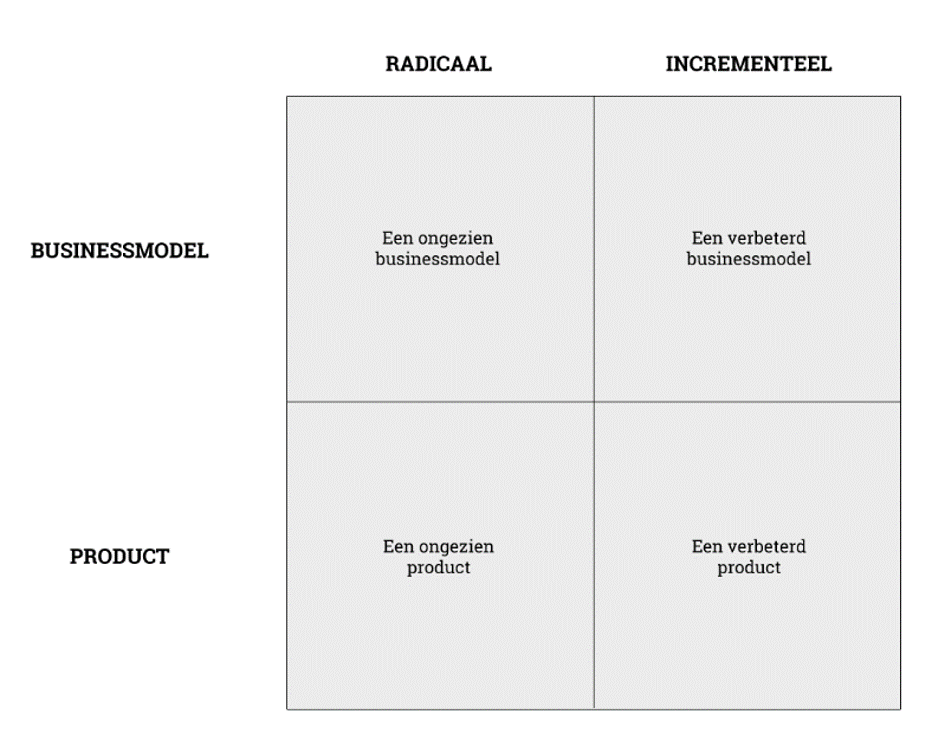Deploy innovation as a means but not an end
Consider before you begin
Sounds logical, but it's not. It is important to start defining a well-thought-out innovation strategy that fits seamlessly with the overall business strategy. One thing is certain, however, remaining stagnant is not an option.
We can speak of four different forms of innovation, subdivided as follows:

An example will clarify:
Business Model Innovation:
We speak of incremental innovation when we change an existing business model. Think of changing a revenue model: by linking a recurring revenue model to your product (e.g. leasing) instead of a one-time cost, you will generate a recurring revenue flow. Innovation certainly, but you are going to convert an existing product so that it becomes profitable in a different way. You're moving from a product-oriented to a service-oriented business model, so to speak.
A great example of this is Microsoft generating recurring revenue with Office 365 (software installation via CD-ROM or download link vs Cloud installation).
The opposite of incremental innovation is radical innovation, where we start inventing a completely new business model from scratch. Consider here, for example, Netflix, which did not enter the market with a new product, but launched a radical innovation in the way movies and series are "sold" to the customer. This business model was completely new and was miles away from the business model of the existing players in the entertainment market.
Product or Service Innovation
We can apply the same strategy to innovation of products and services.
Incremental innovation refers to an improvement or renewal of an existing product or service. If this innovation better meets the needs of the customer and is implemented on a relatively short term for a relatively low budget, this is certainly a viable route for any company. A good example is the continuous development of IKEA products to make them more user-friendly (better handles, sustainable materials, etc.).
In the case of radical innovation, just like radical business model innovation, we are going to invent a product or service from scratch. This involves bigger budgets, longer time-to-market, different strategies, different risk profiles, etc.
Think of the first Iphone, Tesla, ... But smaller players also play a very important role in this, just think of the start-ups that are rising like mushrooms with offerings of innovative products and services.
Anyone can innovate
Undeniable here though is that any company, large or small, can engage in innovation.
Innovation must Become part of the corporate culture. It must be embedded in the DNA of the organization and management must be alert to the recognition of promising innovative ideas. Not by directly stimulating ideation, but rather by setting up the processes so that ideas can be generated and can be followed up.
How can you do this in a smart way ? Find out by Innovita to contact or sign up for our newsletter
